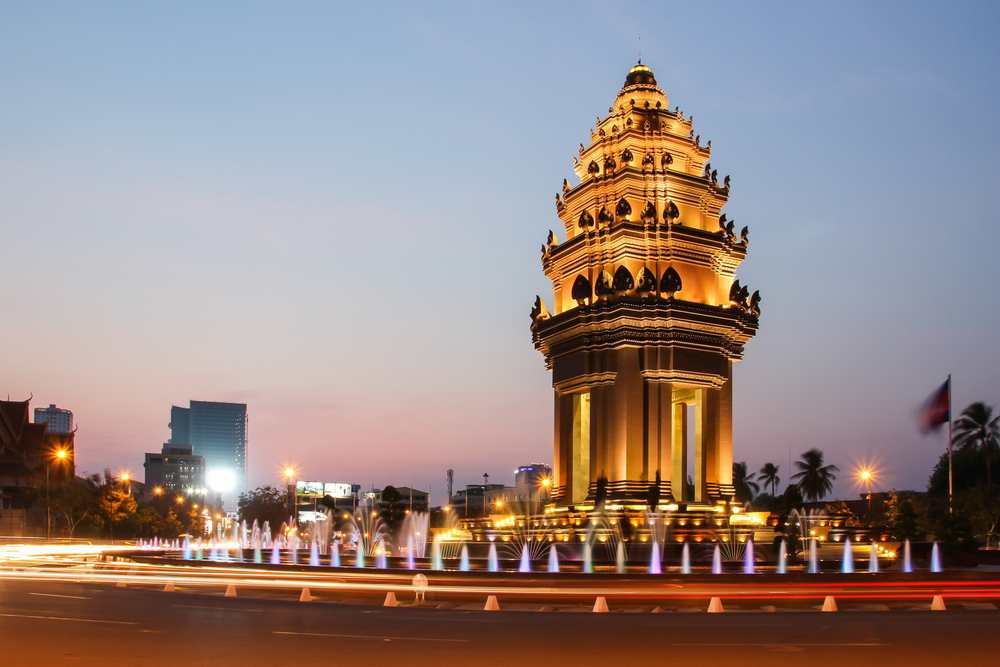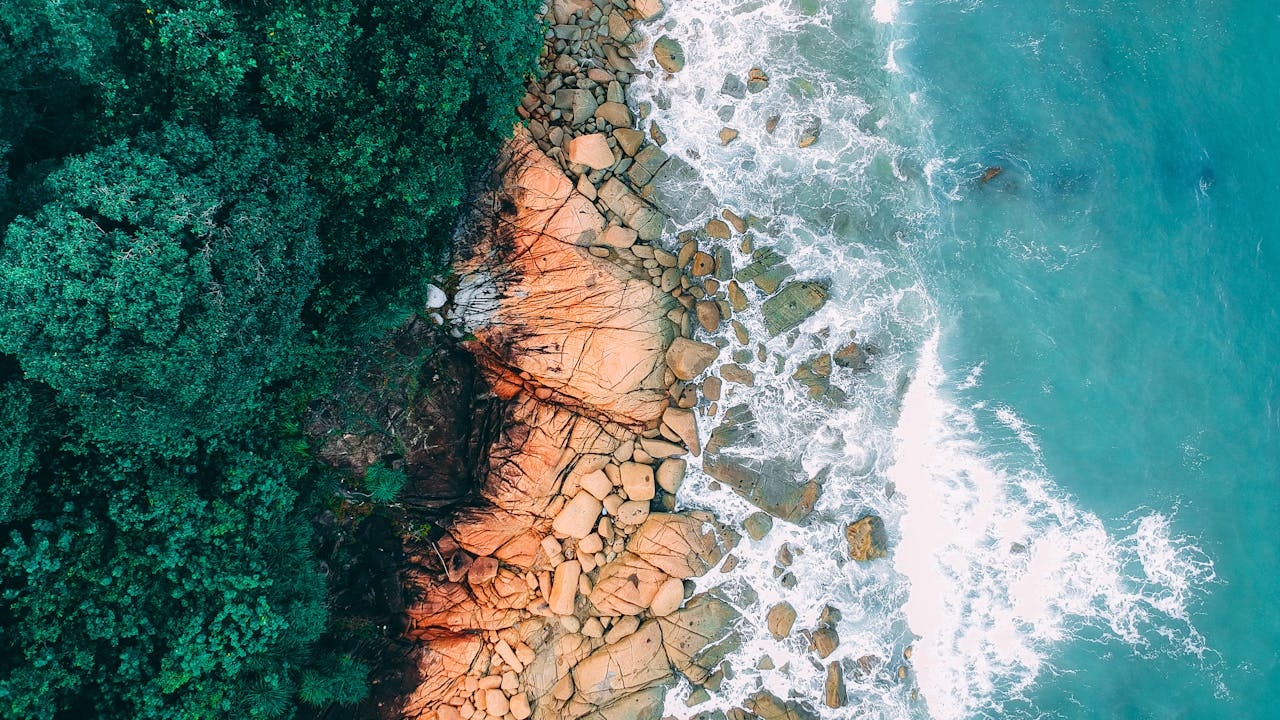Deeply ingrained in history and culture, Cambodia features some of Southeast Asia’s most amazing architectural marvels. From well-crafted palaces and calm pagodas to old temples whispering tales of the glory of the Khmer Empire, Cambodia’s architectural scene reflects its rich legacy. Every building reveals a tale of dedication, workmanship, and resiliency, transforming the nation into a paradise for history buffs and architectural aficionados.
The Timeless Majesty of Angkor Wat
No study of Cambodian architecture is complete without referencing Angkor Wat, the crown gem of the Khmer Empire. Designed under King Suryavarman II in the early 12th century, this magnificent temple complex is the biggest religious structure on Earth. Originally devoted to the Hindu god Vishnu, Angkor Wat later became a Buddhist refuge, displaying the flawless historical integration of spiritual elements.
Angkor Wat’s architectural genius is found in its tall spires that reflect Mount Meru, the legendary center of the world in Hindu and Buddhist cosmology, and its elaborate bas-reliefs and vast stone galleries. The temple’s ideal alignment with the sun during the equinoxes emphasizes even more the sophisticated knowledge of engineering and astronomy the ancient Khmer builders acquired. Adorned with carvings of heavenly dancers, warriors, and epic stories from the Ramayana, a trip through its hallways transports visitors to a world of divine creativity and historical grandeur.
CAMBODIA VISA FOR SLOVENIAN CITIZENS
The Royal Splendor of the Silver Pagoda and Royal Palace
Nestled in the center of Phnom Penh, the Royal Palace is an amazing illustration of Khmer architectural grace. Built in the 19th century, the palace complex represents the ongoing monarchy of Cambodia. It is the official house of the royal family of that country. Its elegantly crafted pavilions and golden rooftops mirror the sophisticated tastes of ancient Khmer construction.
The Silver Pagoda resides on palace grounds, named after the 5,000 silver tiles covering its floor. Among Cambodia’s most valuable relics, this holy place features the life-sized gold Buddha adorned with diamonds and the Emerald Buddha, a figure from baccarat crystal. The inside of the pagoda is equally fascinating; intricate murals illustrating the Reamker, the Khmer rendition of the Ramayana, capture One of Cambodia’s most beloved cultural sites; the Silver Pagoda is a mix of royal grandeur and holy craftsmanship.
The Mystical Beauty of Bayon Temple
Bayon Temple, tucked away in the historic city of Angkor Thom, is a shockingly lovely masterwork of Khmer design. Designed under King Jayavarman VII in the late 12th century, Bayon is most renowned for its mysterious stone faces that stare calmly in all directions. These huge, finely carved faces are thought to be emblematic of the king himself or the bodhisattva of compassion, Avalokiteshvara.
From huge naval battles to market scenes and religious rites, Bayon’s labyrinthine hallways and elaborate bas-reliefs capture aspects of daily life in the Khmer Empire. The temple’s unusual construction combines spiritual symbolism with humanistic narrative, providing a window into the philosophical and creative depth of ancient Khmer society. This architectural marvel has a mysterious appeal as the sunlight moves across the day and the expressions on the stone faces alter.
The Serene Elegance of Wat Phnom
Rising above the busy streets of Phnom Penh, Wat Phnom is a holy refuge rich in myth and history. Constructed in 1372, this Buddhist temple is claimed to have been established by Lady Penh, a rich widow who came upon holy Buddha images in the neighboring river. She built a shrine on a little hill in thanksgiving, and finally, the site developed into the great temple known as Wat Phnom.
Ornate stupas, gilded interiors, and vivid murals portraying Buddhist teachings define the temple’s design, which offers a peaceful haven among the city’s hustle. Climbing the stairs surrounded by naga serpents, pilgrims and guests pay their respects and pray for good fortune. Wat Phnom is a beloved place for prayer and meditation because of its serene atmosphere and spiritual relevance.
CAMBODIA VISA FOR SWEDISH CITIZENS
The Hidden Charms of Banteay Srei
Often called the “Jewel of Khmer Art,” Banteay Srei is a modest but wonderfully finely detailed temple situated northeast of Angkor Wat. Built in the tenth century, this temple is special for its reddish-pink sandstone, which allows quite complex sculptures to survive. With every inch of its walls covered with intricate carvings of Hindu deities, floral patterns, and epic tales from mythology, Banteay Srei’s appeal is in its delicate quality, unlike that of Angkor Wat.
Considered among the best in Khmer architecture, these carvings highlight the great talent of past artists by their accuracy and depth. The close, more personal link is that the temple’s small stature and rich detailing give guests an artistic legacy of Cambodia’s past. The warm glow of the sandstone produces an amazing show when the sun sets, further accentuating the ethereal beauty of the temple.
A Legacy Carved in Stone
The architectural wonders of Cambodia are monuments to a civilization that flourished via artistry, spirituality, and engineering inventiveness, not only remains from the past. Every palace, temple, and pagoda, from the grandeur of Angkor Wat to the elegant simplicity of Banteay Srei, tells a tale of loyalty and resiliency. Investigating these buildings provides a trip through time whereby stone becomes a canvas for the stories of kings, gods, and common people who helped to define Cambodia’s cultural character. For visitors, these architectural marvels offer a visual feast and a closer awareness of the essence and legacy of the nation.
Also Read: Trekking Through Cambodia’s Jungles




